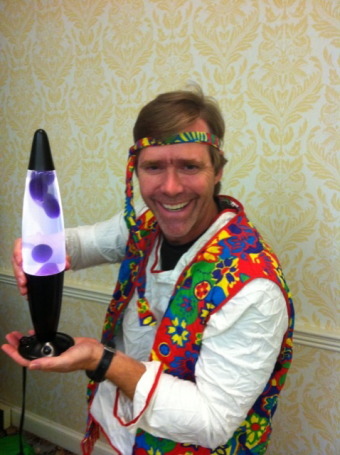 By Dave Chase, CEO of Avado
By Dave Chase, CEO of Avado
Insurance bureaucracy has taken a toll on the family doctor. New practice models plan to change that. Physicians in North Carolina, Seattle, Northern California and elsewhere are proving what the rest of the world already knows. Highly functioning primary care results in less money spent and better health outcomes.
Before House, M.D., there was Marcus Welby, M.D. who epitomized the glory days of healthcare. Dr. Welby knew every one of his patients. If you got sick, he took care of you right away, spending whatever time necessary.
Unfortunately, there’s a radically differently model today that can only be described as a Gordian Knot designed by Rube Goldberg.
It can take a patient days to get in for an appointment, they arrive for an appointment, wait 45 minutes in the crowded waiting room, wait again in the exam room, being charitable they get 10 minutes with their doctor, 15 if they’re lucky. Of course, it’s difficult for him to remember much except for those few notes he scribbled last time. How much can anyone remember about 3,000-4,000 people? If a doctor doesn’t see 30 patients over the course of the day, he’s likely going to be penalized for not hitting his insurance-driven productivity goals. In a typical 10 minute appointment, there’s often no time to go beyond the presenting symptoms and then give the patient a prescription as a way of closing the appointment. Sound familiar?
What happened to the old family doctor represented by Marcus Welby? Insurance killed him.
Today’s insurance reimbursement process severely impedes the delivery of affordable, patient-centered primary care. Whether a doctor is using a paper-based or electronic medical record, much of their time is spent ensuring they properly code billing forms. In many cases, those claims will be denied and the process starts all over again. That doesn’t address a patient needing tests or prescriptions. As reported on CNN, more than 50% of primary care physicians say they would leave practice if they could.
Does one really need insurance for routine primary and preventive care? No. But somehow health care has become synonymous with health insurance. “Insuring primary care is like insuring lunch,” says Nick Hanauer of Second Avenue Partners, a Seattle venture-capital fund that backs one of the new “Direct Primary Care” (DPC) models. “You know you’re going to need it. You know you can afford it. Why on earth would you pay a third party to pay the restaurant on your behalf, adding overhead and taking a big chunk out of the money you pay—and because of the process, have to wait a week to get a table and then have only 10 minutes to eat?”
From my time spent in Patient Accounting departments, it was easy to see why there’s a 40% “insurance bureaucracy tax.” That is money that isn't making anyone healthier. It also doesn’t take into account time and frustration by the patient who is ultimately responsible for care as they have to wade through Explanation of Benefits (that doing anything but explain) and other forms mere mortals have difficulty interpreting (perhaps by design).
Organizations such as MedLion, Qliance and Organic Medicine are demonstrating that they can cut out the fat that insurance reimbursement adds at the same time primary-care doctors can spend more time with fewer patients and still charge low fees. Doctors operating in these models universally state that they are back to practicing medicine the way they were trained. It’s not hard to imagine that more medical students would choose to enter primary care, reversing a disturbing 10-year decline. They have moved beyond the theoretical by setting up these models. Qliance, for example, has shown they are dramatically reducing the most expensive facets of healthcare (Emergency Department, Specialist & Surgical visits) by 40-80% with a panel that mirrors the population as a whole.
How it works
As in the days before insurance, by forming a direct financial and professional relationship with each patient, direct primary care models takes the 40 cents of each dollar that would have otherwise gone into insurance reimbursement processes and puts it into more medical providers, lower fees, longer office hours, and the latest diagnostic equipment. No insurance is required or accepted (though some run hybrid insurance/DPC practices). No complicated billing forms for the typical day-to-day stuff that comes up for your health or even for managing a chronic condition. Many DPC practice offers members same – or next – day appointments plus 24/7 access to a physician. Visits are typically scheduled for an unhurried 30 minutes so that health-care providers can spend the necessary time and conduct the necessary tests to accurately diagnose an illness or provide appropriate wellness counseling. Comprehensive physical exams, included in the monthly fee, typically last an hour or more. When I visited Qliance’s clinic, the waiting room was an oxymoron — no one was waiting most of the time. The only person waiting during the 90 minutes I was there was a person waiting while their family member was having an appointment.
Qliance members choose a personal care team of both a physician and a nurse practitioner who get to know each patient very well, since they see only one-fourth the patients that a typical insurance-based physician does. Members pay only $49 to $89 per month for as much primary and preventive care as they need. On-site digital X-rays, first fill pharmacy and many common lab tests are included in the monthly care fee. MedLion has a roughly similar model charging $59 per month regardless of age and just $10 per visit (they offer discounts for senior citizens and children). It’s so affordable it’s being extended to a farming community with many migrant workers who have difficulty obtaining insurance.
The goal of DPC practices is to make the highest quality primary and preventive care affordable and accessible to all, rich or poor, insured or uninsured. Unlike insurance, they do not prescreen members on the basis of health.
Direct Primary Care practices do recommend health insurance to its patients—but not traditional low-deductible insurance. “Insurance should be used for catastrophic illnesses, not routine care,” explains internist Dr. Garrison Bliss, a national pioneer in direct primary-care practices and Qliance’s cofounder. “A high-deductible health-insurance plan combined with Qliance can save 30 percent to 50 percent off the total cost of comprehensive care. It provides better access and service at the primary-care level while maintaining financial protection for serious illnesses.”
At Qliance’s launch event, Washington State Governor Christine Gregoire told an audience of patients and others: “I see someone like Dr. Bliss and I say many of our physicians in this country and in this state went to school because they wanted to practice medicine, not because they wanted to deal with insurance. Not because they wanted to deal with bureaucracy. In fact, they don’t want to deal with any of that; they want to deal with their patients and that’s what they are really good at. And what Qliance has as a vision and a model is to allow doctors to do what they love and what they feel passionate about, to give patients… what they so richly deserve at an affordable cost and with high quality. It is patient safety. It is driving down costs… This is exactly what we and the patients in the state of Washington need.”
Marcus Welby had it right. Primary care physicians are at their best when their primary focus is their patient. Unfortunately, immense amounts of time dealing with insurance burdens have essentially eliminated the Marcus Welby model but modern day Marcus Welbys are fighting back and having great success. It’s exciting to see the spark return to the primary care physicians I’ve met who’ve removed the insurance yoke and are practicing the way they know is best for their patients (and themselves). You might call it “Do it Yourself Health Reform” driven not by politicos but by physicians.
About: Dave Chase (http://www.linkedin.com/in/chasedave) is a Huffington Post/Washington Post contributor and CEO of Avado.com, a Patient Relationship Management software company, previously founded Microsoft’s Health business and was a consultant with Accenture’s Healthcare Practice.
Submit a guest post and be heard

 If you missed our recent Expedition Medicine National Conference, you missed a great event.
If you missed our recent Expedition Medicine National Conference, you missed a great event. Email This Article tagged:
Email This Article tagged:  Dr. Greg Bledsoe,
Dr. Greg Bledsoe,  Dr. Tim Erickson,
Dr. Tim Erickson,  ExpedMed,
ExpedMed,  Expedition Medicine National Conference,
Expedition Medicine National Conference,  Medical Fusion Conference,
Medical Fusion Conference,  Wilderness Medicine |
Wilderness Medicine |  Sep 19, 3:09 PM
Sep 19, 3:09 PM 










